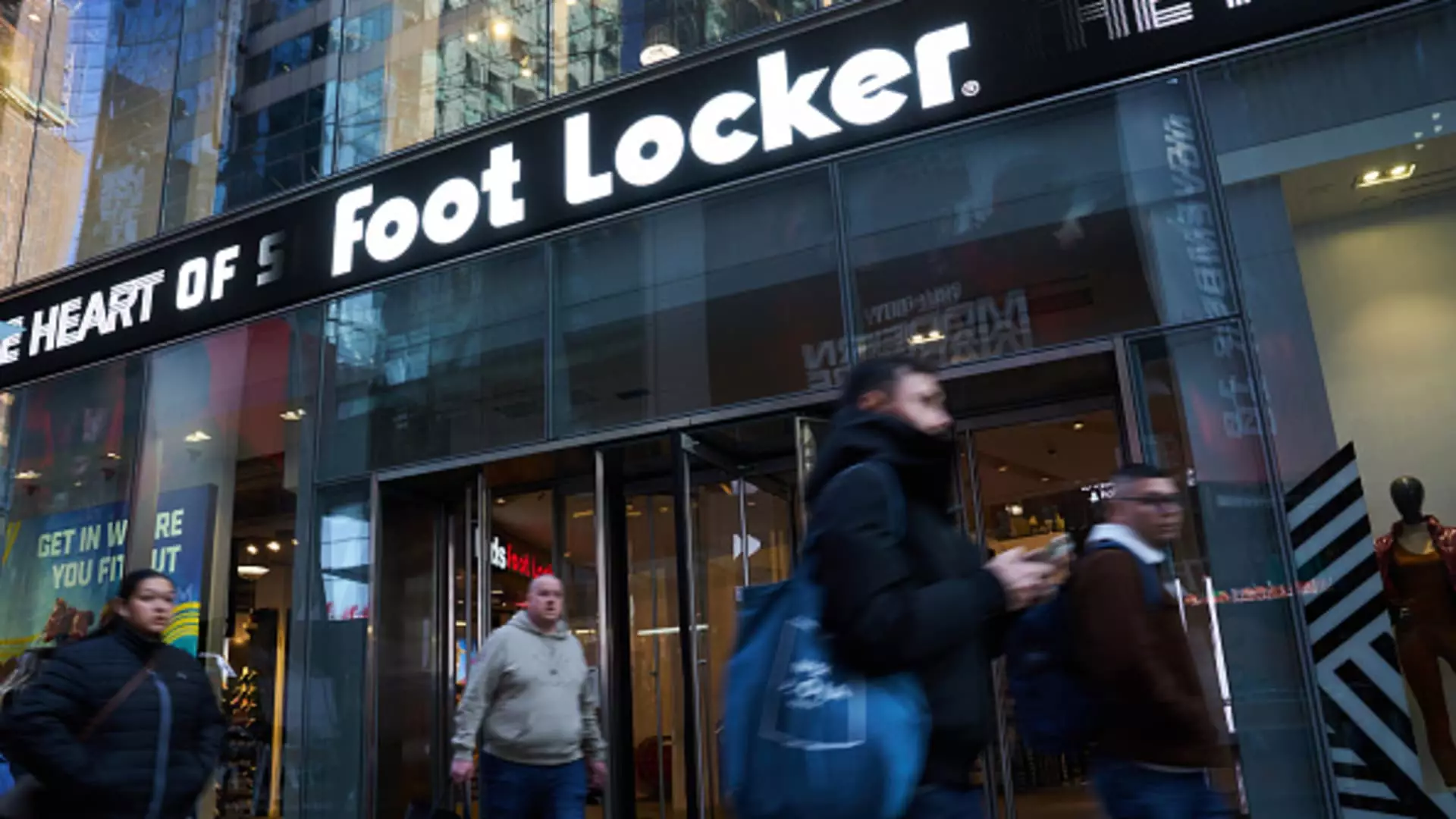When analyzing Foot Locker’s recent performance, it is evident that the beleaguered sneaker company has started to see positive trends emerge after a rough patch. Comparable sales grew for the first time in six quarters, exceeding analyst expectations with a 2.6% uptick. Despite this promising growth, the company’s shares dropped about 8% in premarket trading, indicating that investors might have concerns beyond just the sales figures.
Looking closely at Foot Locker’s financial results for the fiscal second quarter, the numbers paint a mixed picture. The company reported a loss of $12 million, or 13 cents per share, as compared to a loss of $5 million, or 5 cents per share, from the previous year. On the revenue front, sales rose to $1.90 billion, representing a 2% increase from the previous year. Additionally, Foot Locker maintained its guidance for the current fiscal year, expecting sales to be in a range of a 1% decline to 1% growth, and adjusted earnings per share to be between $1.50 and $1.70. These projections seem to be in line with market expectations, with slight variations in certain areas.
CEO’s Turnaround Strategy
Since Mary Dillon took the helm of Foot Locker about two years ago, the company has been undergoing a significant transformation to stay relevant in an evolving retail landscape. Dillon’s efforts have focused on repairing the company’s relationship with major brand partner Nike, revitalizing its store fleet, and enhancing the overall customer experience. The CEO’s strategic decisions have been driving positive results, with Foot Locker’s top-line trends strengthening as the company works towards stabilization and growth.
Store Upgrades and Cost-Cutting Measures
Foot Locker’s commitment to upgrading its stores, investing $275 million in renovations this year, and streamlining costs are key components of its turnaround strategy. The company’s plan to have two-thirds of its store fleet remodeled by the end of fiscal 2025 reflects a proactive approach to enhancing customer experience and driving financial returns. Additionally, the decision to close stores and e-commerce operations in certain regions, while expanding operations in others, demonstrates a strategic focus on optimizing the company’s operational efficiency.
Global Expansion and Brand Partnerships
Foot Locker’s efforts to strengthen its global presence, particularly through partnerships with key brands like Nike, are crucial for long-term success. By developing new megastores in strategic locations and collaborating closely with Nike on shop design and consumer insights, Foot Locker is positioning itself as a destination for sneaker enthusiasts worldwide. The company’s innovative approach to retail partnerships underscores a commitment to sustainable growth and brand relevance in a competitive market.
The decision to relocate Foot Locker’s global headquarters from New York City to St. Petersburg, Florida, highlights a strategic shift towards operational efficiency and cost savings. While the move aims to increase collaboration among teams and reduce expenses, it is also intended to maintain a strong presence in St. Petersburg, where many executives and commercial teams are already located. The emphasis on employee well-being, with no forced relocations and a flexible work arrangement for CEO Mary Dillon, reflects a people-centric approach to organizational change.
Consumer Trends and Market Dynamics
In a retail landscape characterized by shifting consumer behaviors and economic uncertainties, Foot Locker’s ability to adapt and innovate is critical. As the company focuses on enhancing stores, products, and online experiences for customers, it is essential to remain agile and responsive to changing market conditions. Despite challenges such as inflation and high interest rates impacting consumer spending, Foot Locker’s strategic initiatives are aimed at meeting customer needs and driving sales growth effectively.
Foot Locker’s resurgence under CEO Mary Dillon’s leadership reflects a strategic blend of operational improvements, brand partnerships, and customer-centric initiatives. While the company has made significant strides in reviving its store performance, financial results, and market positioning, ongoing challenges in the retail landscape require continued focus and innovation. By capitalizing on positive trends, addressing evolving consumer preferences, and maintaining a competitive edge, Foot Locker can sustain its momentum and drive long-term success in the dynamic retail industry.

